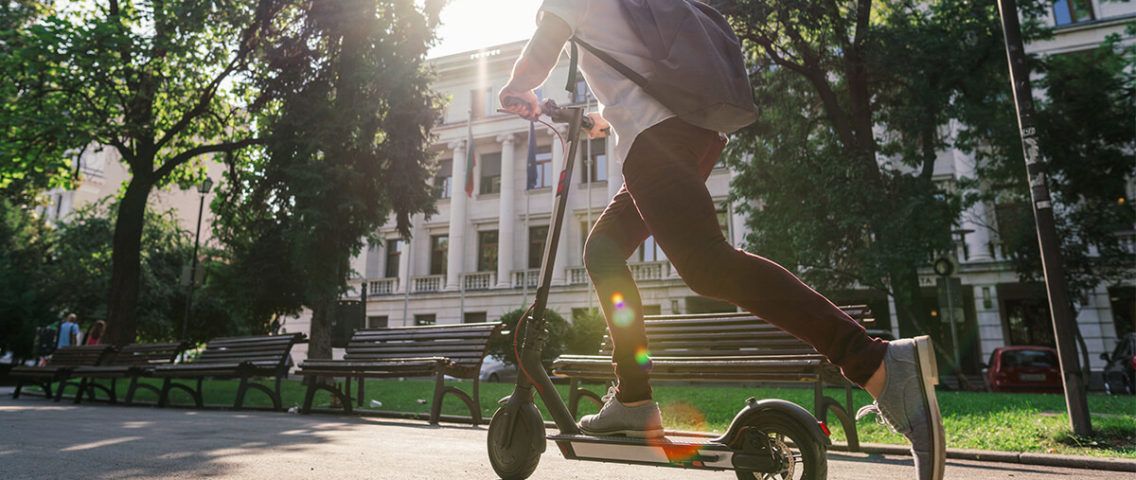The impact of urbanization in the age of living retail
Nov 20, 2019 • 4 min
Welcome to the third installment of our Living Retail series. In Part 2, we explored the first of three major change agents in the age of Living Retail — a power shift toward the consumer. In Part 3, we’ll discuss a second, closely related change agent: a rapid demographic shift toward urbanization.
Retail is about people: what we need, what we want, and where and how we live. That’s why retail innovations always have and, for companies that plan to stay competitive, always will mirror demographic trends.
Consider how Sears, a storied giant among American retailers, found success throughout the 20th century. Like most of Europe, the US saw a spike in industrialization in the 1920s that drove people from rural areas toward the cities where they could find factory work. For the first time, more Americans lived in urban centers than not.
So how did Sears respond to meet a new set of behavioral patterns, lifestyle needs, and customer expectations? They developed their department stores as both an urban convenience and a destination shopping experience in the heart of the American city. But by that same token, when the 1950s and 60s ushered in a shift toward the suburbs, they too shifted focus toward suburban shopping malls.
Where Do Shoppers Live Today? Tomorrow?
Today, malls that were thriving just a couple decades ago struggle for survival. One reason for this is yet another demographic shift — this time away from the suburbs, back toward cities.
This trend is especially pronounced among millennials. According to Cervero, et al. in Beyond Mobility: Planning for People and Places, “two-thirds of America’s 25- to 34-year-olds with a bachelor’s degree live in the nation’s metropolitan areas with populations of a million or more.” But even when we remove these restrictions, a global trend toward urbanization persists. More than that, it’s projected to escalate dramatically: “Between 2014 and 2050, the number of city dwellers will increase from 54% to 66% of the world’s population.”
By 2025, city-dwellers are projected to account for some $20 trillion of the annual global economy. Because retail follows people, retailers must plan to cater to the needs of and priorities of these shoppers and their concentrated purchasing power if they wish to remain competitive into the future.
How Is Urbanization Impacting Retailers?
Does today’s urbanization mean that retailers can learn from history by replicating strategies that worked in the 1920s? Of course not! The economies cannot be compared, for one thing. But another important difference is that, while change isn’t new to retailers, it’s more complex in the age of Living Retail, and it comes in faster waves than ever before.
In Part Two of this series, we discussed how unprecedented technological progress in recent years has shifted power away from retailers, toward consumers. This power shift and urbanization both touch on a change in lifestyle priorities — away from the spaciousness and slower pace of suburban/rural life toward the high accessibility and immediacy of the city.
Millennial urbanites in particular are spending in ways we’ve never seen before. When it comes to larger expenses, they often delay or entirely eschew traditional rites of passage like home-buying or starting a family in favor of experiences like travel. For retail purchases, they prefer highly tailored, sustainably produced items over inexpensive, mass-produced ones. They also prefer a shopping experience marked by extreme convenience — meal kit delivery services, for example.
They expect accessibility, a wide range of inventory, high availability, a seamless omnichannel experience, and 2-day, next day, or even same-day delivery.
But regardless of age, the trends associated with technological progress and shifting power dynamics are especially pronounced among urban shoppers. They expect accessibility, a wide range of inventory, high availability, a seamless omnichannel experience, and 2-day, next day, or even same-day delivery. As urban populations explode, so too will the pressure on retail supply chains.
Supply Chains Built for Urbanization Are Autonomous and Adaptive
Customers surely benefit from more options and faster delivery — but the storage space required to meet these expectations is far more expensive in cities than it would be elsewhere. Companies like Walmart and Target have addressed this challenge by using existing stores as fulfillment centers for their online sales.
But this problem — and others that arise when catering to a demanding consumer base concentrated in expensive city centers — requires a fundamental shift in supply chain strategy. Retailers need technology that makes their planning processes autonomous and extremely adaptive.
As the challenges of urbanization and shifting power dynamics continue to mount, companies must be able to automate forecasting and replenishment decisions. Many supply chain planners are unnecessarily burdened with this time-consuming, repetitive, manual work. Modern retail optimization software can not only automate those decisions, it can apply pragmatic AI to significantly improve them. Retailers with autonomous supply chains can make faster, better decisions while freeing their supply chain experts to tackle the most difficult challenges head-on — developing a fulfillment model that will best serve their business strategy, for example.
The software that enables this autonomy must also improve a retailer’s adaptability and resiliency to future change. As discussed in the previous installment, our “configure — don’t code” approach allows retailers to experiment and innovate without heavy time or resource investment. We built this capability into our software because we know that the only way for retailers to stay competitive is if we empower them to adapt their supply chains to changing conditions as quickly as the change comes these days.
With an autonomous, adaptive supply chain, retailers will better position themselves to meet consumer demands as they continue to evolve. After all, who’s to say what trends we’ll be adjusting to in the years to come?
In the fourth and final installment of this series, we’ll talk about the importance of sustainability for retailers in the age of Living Retail.



